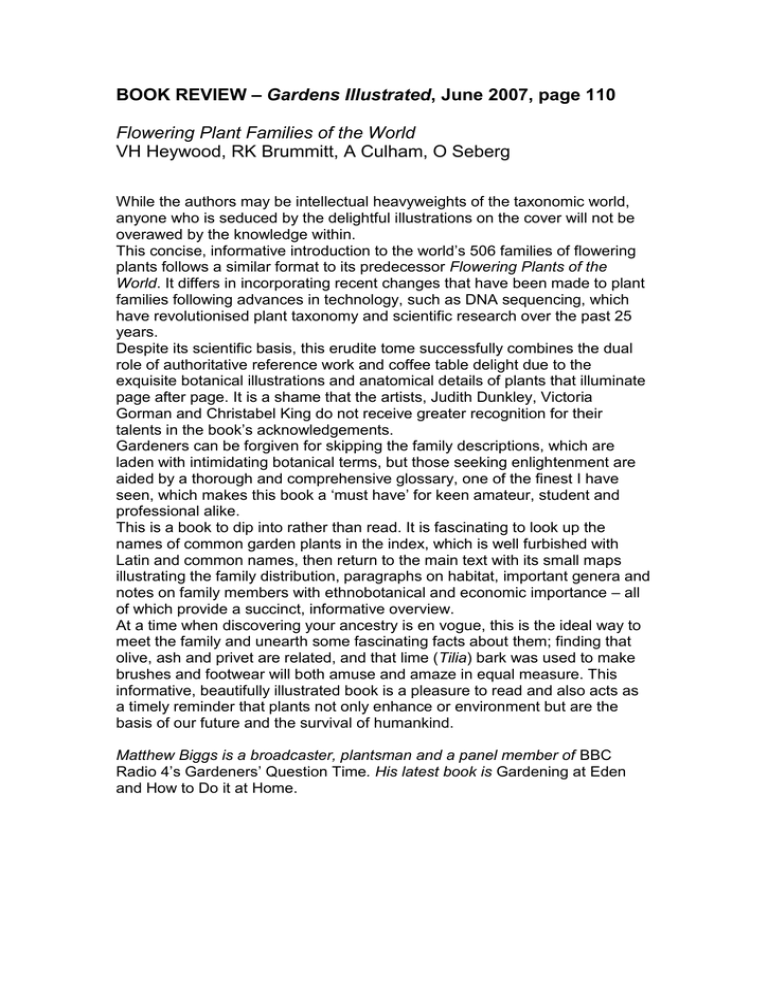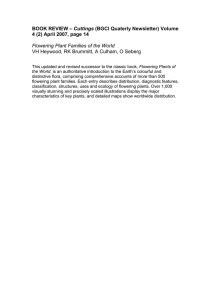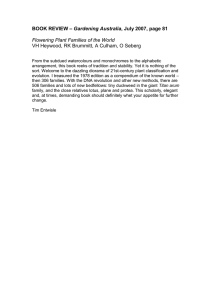Gardens Illustrated BOOK REVIEW VH Heywood, RK Brummitt, A Culham, O Seberg
advertisement

BOOK REVIEW – Gardens Illustrated, June 2007, page 110 Flowering Plant Families of the World VH Heywood, RK Brummitt, A Culham, O Seberg While the authors may be intellectual heavyweights of the taxonomic world, anyone who is seduced by the delightful illustrations on the cover will not be overawed by the knowledge within. This concise, informative introduction to the world’s 506 families of flowering plants follows a similar format to its predecessor Flowering Plants of the World. It differs in incorporating recent changes that have been made to plant families following advances in technology, such as DNA sequencing, which have revolutionised plant taxonomy and scientific research over the past 25 years. Despite its scientific basis, this erudite tome successfully combines the dual role of authoritative reference work and coffee table delight due to the exquisite botanical illustrations and anatomical details of plants that illuminate page after page. It is a shame that the artists, Judith Dunkley, Victoria Gorman and Christabel King do not receive greater recognition for their talents in the book’s acknowledgements. Gardeners can be forgiven for skipping the family descriptions, which are laden with intimidating botanical terms, but those seeking enlightenment are aided by a thorough and comprehensive glossary, one of the finest I have seen, which makes this book a ‘must have’ for keen amateur, student and professional alike. This is a book to dip into rather than read. It is fascinating to look up the names of common garden plants in the index, which is well furbished with Latin and common names, then return to the main text with its small maps illustrating the family distribution, paragraphs on habitat, important genera and notes on family members with ethnobotanical and economic importance – all of which provide a succinct, informative overview. At a time when discovering your ancestry is en vogue, this is the ideal way to meet the family and unearth some fascinating facts about them; finding that olive, ash and privet are related, and that lime (Tilia) bark was used to make brushes and footwear will both amuse and amaze in equal measure. This informative, beautifully illustrated book is a pleasure to read and also acts as a timely reminder that plants not only enhance or environment but are the basis of our future and the survival of humankind. Matthew Biggs is a broadcaster, plantsman and a panel member of BBC Radio 4’s Gardeners’ Question Time. His latest book is Gardening at Eden and How to Do it at Home.




